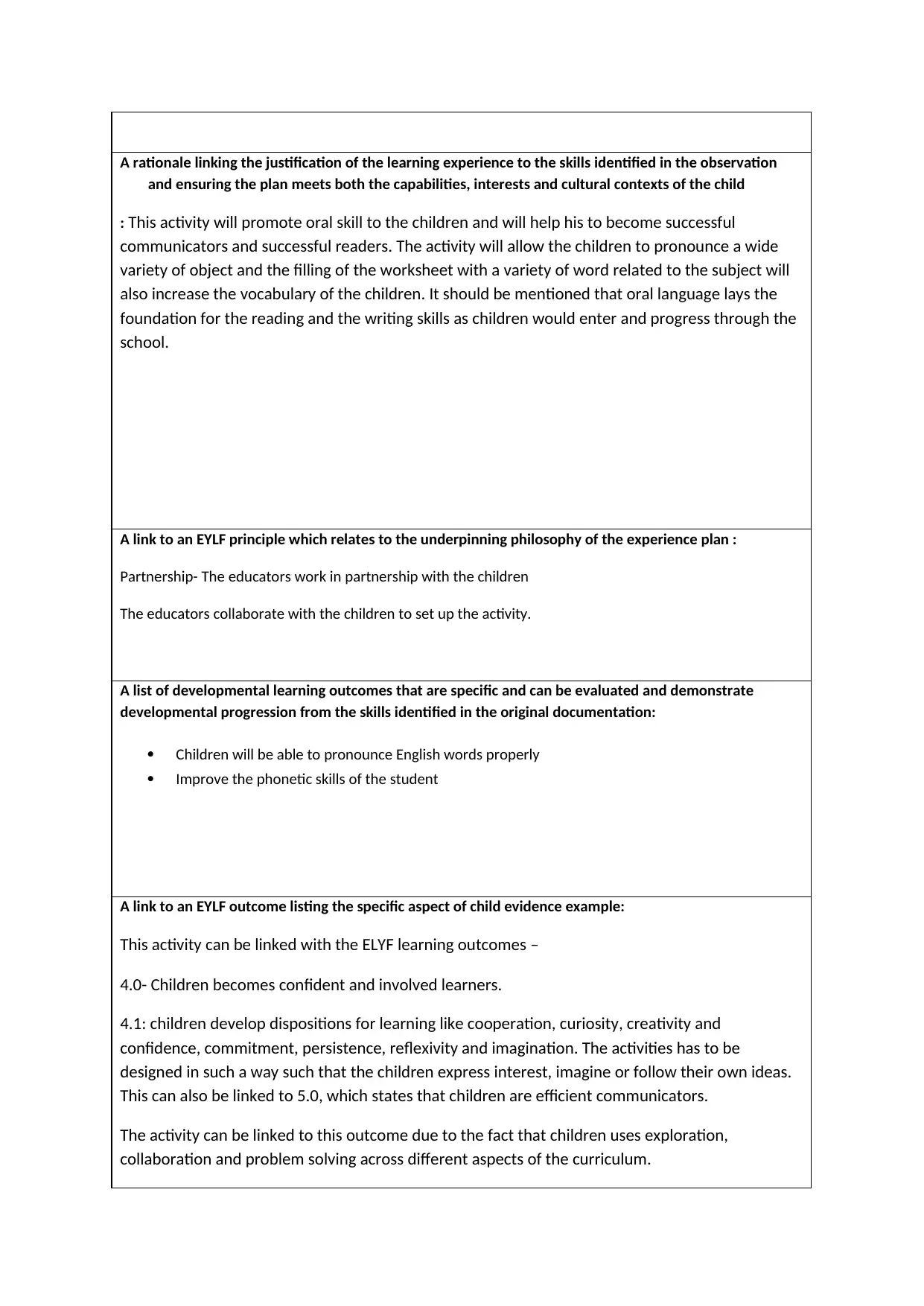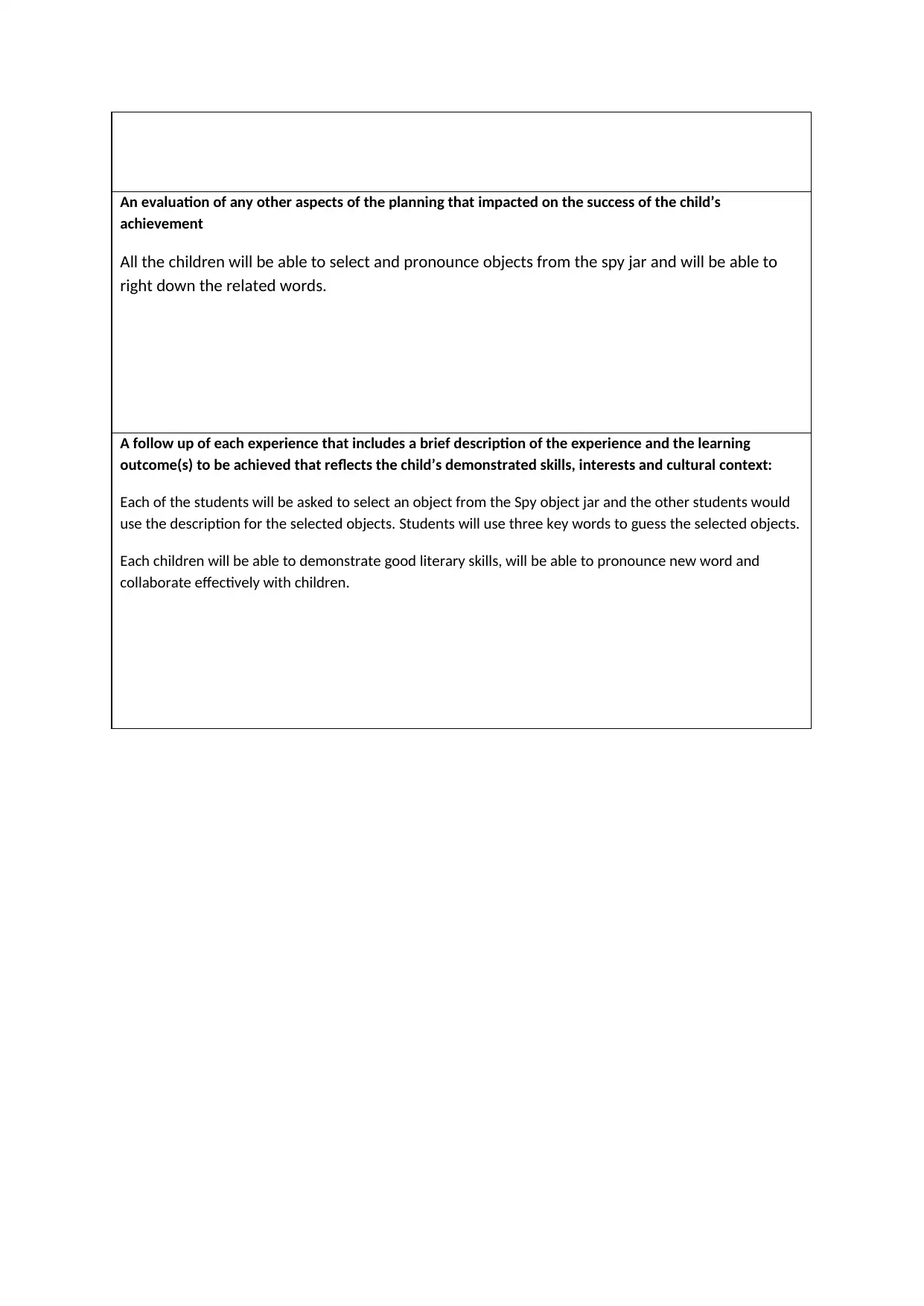Oral Language Teaching Resource: I Spy Activity and Lesson Plan
VerifiedAdded on 2023/01/20
|4
|897
|83
Practical Assignment
AI Summary
This assignment presents an 'I Spy' oral language teaching resource designed for K12 education, specifically targeting early childhood development. The activity involves an enlarged 'I Spy' object jar, where students describe objects using descriptive sentences, enhancing their vocabulary and phonetic skills. The resource aligns with EYLF principles, emphasizing partnership and children's active involvement in learning. Developmental learning outcomes focus on pronunciation and phonetic skills, linked to EYLF outcomes 4.0 and 5.0, promoting confident communication and exploration. Teaching strategies include rhyming and singing activities. The evaluation assesses vocabulary development and pronunciation. The follow-up activity involves object descriptions and keyword usage, reinforcing literary skills and collaboration. This resource aims to create successful communicators and readers, stimulating language through complex questioning and the use of adjectives, verbs, and pronouns.
1 out of 4










![[object Object]](/_next/static/media/star-bottom.7253800d.svg)